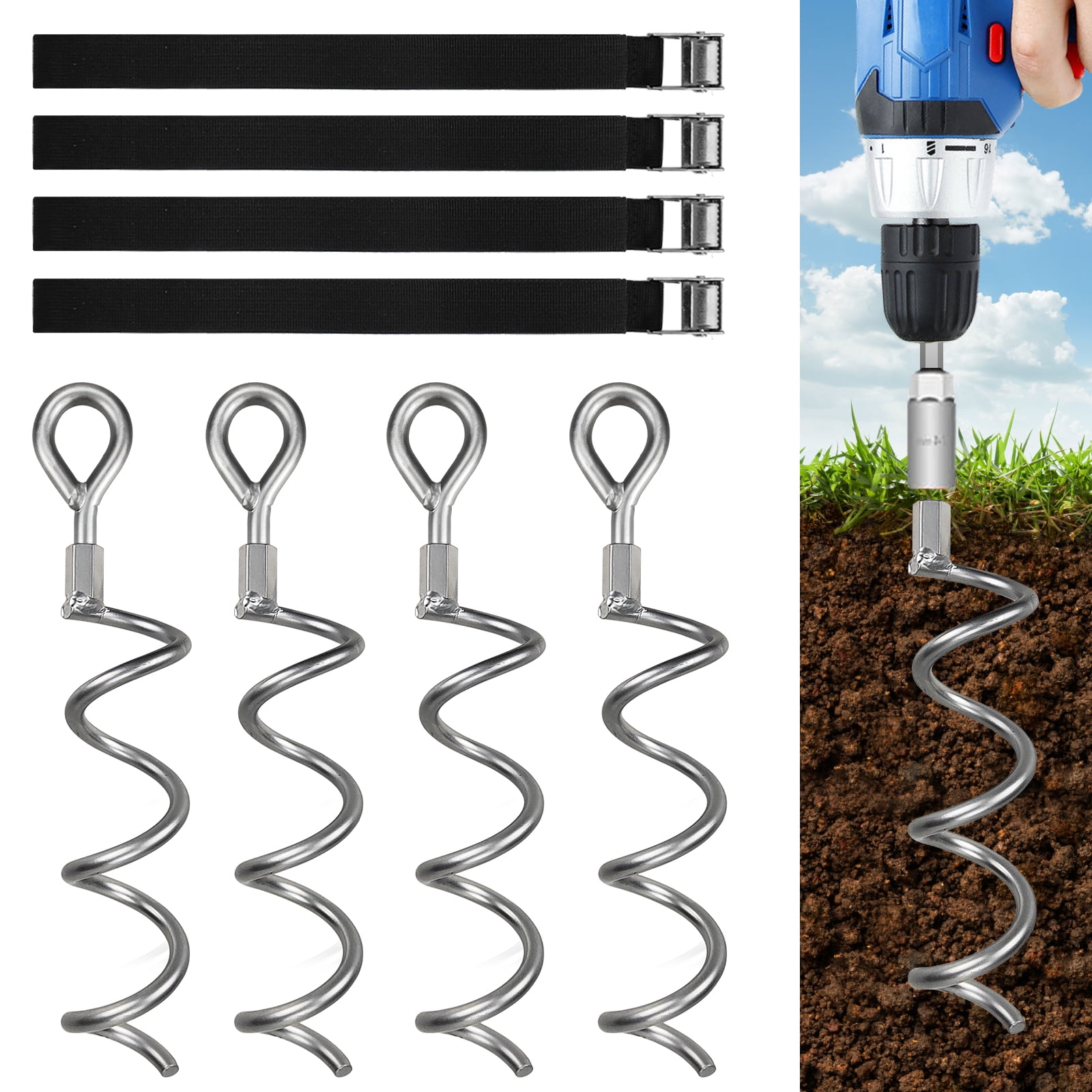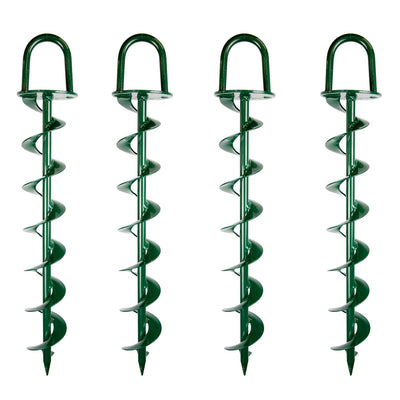Check Out the Various Types of Ground Support for Your Following Task
From auger supports, which excel in varied dirt problems, to risk supports developed for temporary installments, the options are countless. Additionally, concrete and screw anchors existing special advantages in particular circumstances, while deadman supports are customized for applications needing resistance to lateral forces.

Auger Anchors
Auger anchors are a popular selection in numerous building and construction and landscaping tasks due to their unique design and reliable securing capabilities. These supports are composed of a helical screw-like shaft that is driven right into the ground, enabling a secure and stable hold. The spiral layout facilitates simple setup and makes best use of resistance against side pressures, making auger supports particularly efficient in applications such as fence, temporary frameworks, and erosion control.
The setup process of auger anchors is reasonably straightforward. They can be manually or mechanically set up, depending on the size and required depth. This versatility allows for their usage in diverse soil problems, from sandy to clayey terrains. Additionally, auger supports can be easily eliminated and reused, which includes in their cost-effectiveness and sustainability.
One of the substantial benefits of auger anchors is their ability to distribute tons evenly throughout the surrounding dirt, minimizing the danger of soil disruption and lessening environmental impact. Furthermore, they are less prone to heaving or loosening over time contrasted to standard securing techniques. As a result, auger supports are an exceptional choice for projects needing reliable and long lasting anchoring services.

Stake Anchors
When it involves protecting frameworks in a variety of exterior applications, risk anchors supply a straightforward and reputable option. These anchors are generally constructed from durable products such as steel or light weight aluminum, developed to hold up against environmental tensions while offering ideal stability. Their easy design permits quick installation, making them an ideal selection for permanent or short-lived anchoring demands.
Risk anchors are especially useful in securing outdoors tents, covers, and other lightweight frameworks against wind and weather condition. They function by being driven right into the ground at an angle, creating a strong hold that resists pull-out forces - Ground Anchor. The efficiency of stake anchors depends on numerous aspects, consisting of soil kind, dampness web content, and the angle of installment
For added safety, many risk anchors come with attachment factors for bands or ropes, permitting tension modifications as needed. In applications such as landscape design or construction, they can successfully maintain tools or frameworks on unequal surface. Overall, stake anchors supply a flexible and economical remedy for safeguarding numerous exterior installments, making them a recommended selection for professionals and DIY lovers alike.
Concrete Anchors
Concrete supports give a durable service for protecting structures to concrete surfaces, making certain security and safety in various applications. These anchors are important for jobs varying from residential constructions to large commercial setups. They are available in various kinds, consisting of expansion supports, sticky supports, and undercut anchors, each designed for certain tons demands and ecological problems.
Adhesive anchors utilize high-strength epoxy or resin to bond the support to the concrete, providing exceptional load-bearing abilities, especially in split concrete scenarios. Undercut supports develop an one-of-a-kind shape within the concrete, offering extraordinary holding power, specifically in applications where tensile loads are prevalent.
When implemented correctly, concrete supports significantly improve the structural stability of numerous jobs, making them important over at this website in modern building methods. Recognizing the certain demands of your task will assist in choosing the ideal type of concrete support for the task.
Screw Anchors

Screw supports are a flexible securing solution that can be effectively employed in a range of applications where traditional concrete supports may not be adequate. These supports include a helical design that permits them to be conveniently driven into the ground, making them suitable for usage in soil and various other substratums. Their special structure gives excellent holding power and resistance to pull-out forces, making them appropriate for numerous tasks, from landscape design to structural assistance.
Among the key benefits of screw supports is their simplicity of setup. They need minimal tools and can frequently be mounted without the requirement for excavation, which saves both time and labor costs. Additionally, screw anchors can be removed and recycled, providing a lasting option for momentary applications.
Screw anchors are specifically useful in areas where dirt problems are challenging, such as loosened or sandy dirts. Their ability to be set up at varying midsts enables modification based on particular project requirements. Generally, screw anchors supply a trusted and reliable securing technique, making them a superb selection for engineers and professionals looking their explanation for effective services for their projects.
Deadman Anchors
Deadman supports offer as a robust option for supporting frameworks in difficult conditions, particularly where standard securing techniques might fail. These supports are composed of big, heavy things hidden underground, which produce resistance against lateral forces. The design normally includes a horizontal element, such as a block of concrete or a steel plate, hidden in the dirt, to which wires or straps are attached.
The effectiveness of deadman anchors hinges on their capability to disperse loads over a larger area, lowering the risk of failure in unstable dirt conditions. They are especially beneficial in applications such as keeping wall surfaces, momentary frameworks, and slope stabilization, where dirt movement can jeopardize the stability of the structure.
Setup of deadman supports requires cautious preparation to guarantee they are put at the proper deepness and alignment, optimizing their load-bearing ability. While they might need more labor and product than light-weight anchors, their integrity in negative problems makes them very useful for long-lasting tasks. Deadman anchors are flexible and can be adjusted to various applications, making them a best selection for designers dealing with one-of-a-kind difficulties in their projects.
Conclusion
Auger supports stand out in diverse soil conditions, while risk supports suit short-lived applications. For concrete surfaces, growth and glue anchors give dependable options, and screw anchors supply convenience in difficult surfaces.
In addition, concrete and screw anchors existing one-of-a-kind benefits in details scenarios, while deadman anchors are customized for applications content requiring resistance to lateral pressures - Ground Anchor.Auger supports are a popular option in various construction and landscape design jobs due to their one-of-a-kind style and efficient anchoring capabilities. They come in various kinds, consisting of growth anchors, sticky supports, and undercut supports, each developed for particular tons requirements and environmental problems
Sticky anchors utilize high-strength epoxy or material to bond the anchor to the concrete, providing remarkable load-bearing capacities, particularly in fractured concrete circumstances. On the whole, screw anchors supply a reputable and effective anchoring approach, making them an excellent choice for service providers and designers seeking effective remedies for their projects.